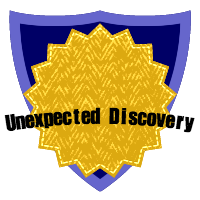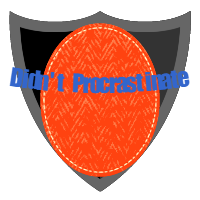 I often tell my students that good teaching means taking risks, tinkering, and taking on a challenge. It supports your professional growth and keeps you passionate about the work.
I often tell my students that good teaching means taking risks, tinkering, and taking on a challenge. It supports your professional growth and keeps you passionate about the work.
This is the beginning of a story of a challenge I set for myself – using open badges in a college classroom. As I shared my ideas about using badges over the summer with friends and colleagues, I knew I was on to something, since 50% of my colleagues were incredibly excited about it, and 50% said I was crazy. That proportion seemed just about right to meet the challenge of figuring out how to use badges in a way that would engage students in learning and sharing – enough support to keep me going, and enough questioning to challenge me to prove that it could work.
For those of you who are wondering, “What are open badges?!” A simple way to describe them is that they are a digital form of recognition of talents, skills, and accomplishments that are created, issued, and displayed in a community of practice. The difference between “open badges” and “digital badges” is that digital badges are generally a pre-determined set of digital awards issued by a teacher or authority figure, whereas open badges can be created and issued by learners. If you are interested in learning more, check out this google doc of resources.
Now, on to the story, which is currently unfolding this semester, in my course, ED216 “Literacy in the 21st Century” (Check out #ED216 for student/teacher tweets about the class!). In this first series, I’ll describe my “Why’s” for open badges, and how I set the tone and foundation for using open badges in my classroom. I am starting with the “Why’s” because this post is also going out to folks in the Connected Courses community (#ccourses on twitter), an open, online course for higher ed folks interested in open and connected learning, and the first unit is on “Why Connected Courses?”
Why Did I Decide to Ignore 50% of My Colleagues and Try Digital Badges?
It was a mid-summer Friday afternoon. I had one hour left to plan my syllabus for #ED216 before my son came home and the weekend began. I had just finished writing the “class ethos” in the introduction, a list of important norms for interactions and practices in the class. I had borrowed a bit from FemTechNet (“Sharing is Caring”), and gone on to imagine more of what kind of community I wanted to create. The cursor was blinking at the end of my last sentence, “It’s okay to make mistakes.” I believed it, but how could I create a space that encouraged students to try, tinker, maybe fail a bit, and try again? How could I create a classroom in which students felt ownership over their own learning, supported others in the process, and felt uniquely recognized for their talents and contributions? It wouldn’t be through my traditional assessments: papers graded solely by me, using set rubrics that scared students into thinking there was one right way, and narrowed the parameters for creation and exploration. I needed the students to be part of the process with me.
 A memory floated by in my head of Christina Cantrill (of National Writing Project’s Digital Is site) telling me about Mozilla’s open badges program. I went to the site: http://www.openbadges.me and found that learners could create and issue badges. Eureka! What if students played a part in recognizing each other’s talents and achievements? I could still use some of my traditional assessments if I wanted to, and Open Badges allowed student to join in the conversation – students would be writing their blog posts not just for me to read, but for their classmates to read and engage with in authentic conversations. Open badges gave them a stake in their learning.
A memory floated by in my head of Christina Cantrill (of National Writing Project’s Digital Is site) telling me about Mozilla’s open badges program. I went to the site: http://www.openbadges.me and found that learners could create and issue badges. Eureka! What if students played a part in recognizing each other’s talents and achievements? I could still use some of my traditional assessments if I wanted to, and Open Badges allowed student to join in the conversation – students would be writing their blog posts not just for me to read, but for their classmates to read and engage with in authentic conversations. Open badges gave them a stake in their learning.
My fears were (and still are) that badges would lead to a numbers game, or worse, some kind of strange social competition in the class. Yet, after some of our initial conversations about badges, many of these fears were allayed, as I learned from them about what badges might mean to them. So I’ll share how we came to engage in these conversations….
How I introduced Open Badges to my students
My students are sophomores in college. They have grown up during the age of No Child Left Behind, a heavily standardized era of education, in which students’ success in generally measured by numbers and their ability to get “the right answer.” I believe school, and especially college, should be a place of critical knowledge production, not simply replication. School should be a place in which students learn to be engaged and active agents for change and social justice in the world. This means that there is usually more than one answer to a question, and that students should be generating questions, and searching for multiple perspectives on answers. Sometimes these concepts are jarring to students – I have frequently encountered situations in which a student simply wants to know how many points they need, or what the correct answer is in order to get an ‘A.’
So, I couldn’t just introduce open badges as a shiny new idea – that was just not going to fly; it doesn’t connect with their previous schooling experience. I needed to lean what schema they did have that I could connect with. So, I started with the question “Who here is/was a boy scout, girl scout, or has ever played video games?” Every hand was raised. Next, I asked them, “Think back to a time when you earned a badge, or even a certificate/award during your participation in a group or community (like boy scouts) – how did that shape your role/experience in that community?”
This question brought forth a stream of answers that even I had not considered. I was expecting “it kept me motivated” and “it made me want to earn more,” which I did hear, but what I learned from my students that day was how the badges/awards served as a way for them to feel uniquely, accurately, and truly recognized for their work and talents, and how it also helped them communicate to others who they were or what they did. I recall one student mentioning how an award she received served to reinforce and recognize a skill that she thought she had, but now had confidence in, since the community recognized her for it. What kept coming up was the ways in which these badges served as a forms of community recognition as well as expressions of personal identity.
This discussion set the tone for the Why’s of open badges for the students. Later, I showed a video about badging, and provided some web resources for them to explore. Yet, I don’t think that these would make sense or connected with them as much if we hadn’t done the groundwork in understanding how badges can shape a community.
What I Didn’t Realize
Our first experimental assignment was for students to come up with badges for themselves in relationship to their first assignment (which was to interview a young person and older person on their literacy practices and compare/contrast). As the badges started appearing (shared on our google+ community), I began to have a deeper appreciation for badges because they revealed information about the student’s learning experience that I would have never known had I used traditional grading. For example, one student issued a “figuring out how to use technology” badge. As a reader, I would not have known the struggle she went through in “figuring out technology,” because I would have only seen the end product. Her self-appointed badges helped me know what process she went through and what was important to her as a learner. Another insightful badge was the “unexpected discovery” badge – a student gave himself this badge because the the new understandings and connections he made through the assignment that he did not think would happen. Finally, one of my favorites (and one that I should try to issue to my self more often) was the “did not procrastinate” badge – Kudos to that student!
In my next installment of this story, I will detail the ins and outs of how I (really we – as a class) created a functioning open badging system. I will describe the technology hacks we had to do in order to make it work for the class, and also share how the badging fits into the grading system. Check in next week for this (unless I fail to earn the “did not procrastinate” badge…). In the meantime, please share your comments, ideas, questions, and suggestions below!

Pingback: 8 Things I Learned About Teaching with #openbadges | Kira J Baker-Doyle, Ph.D.